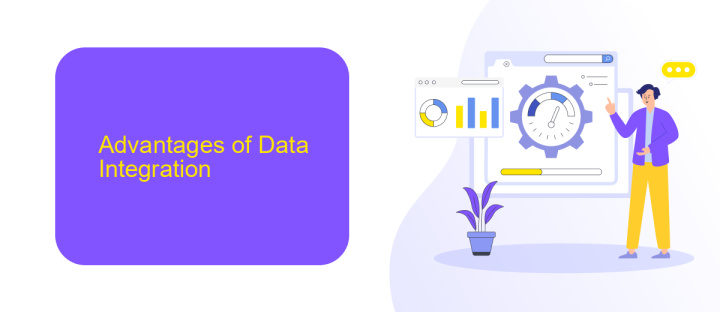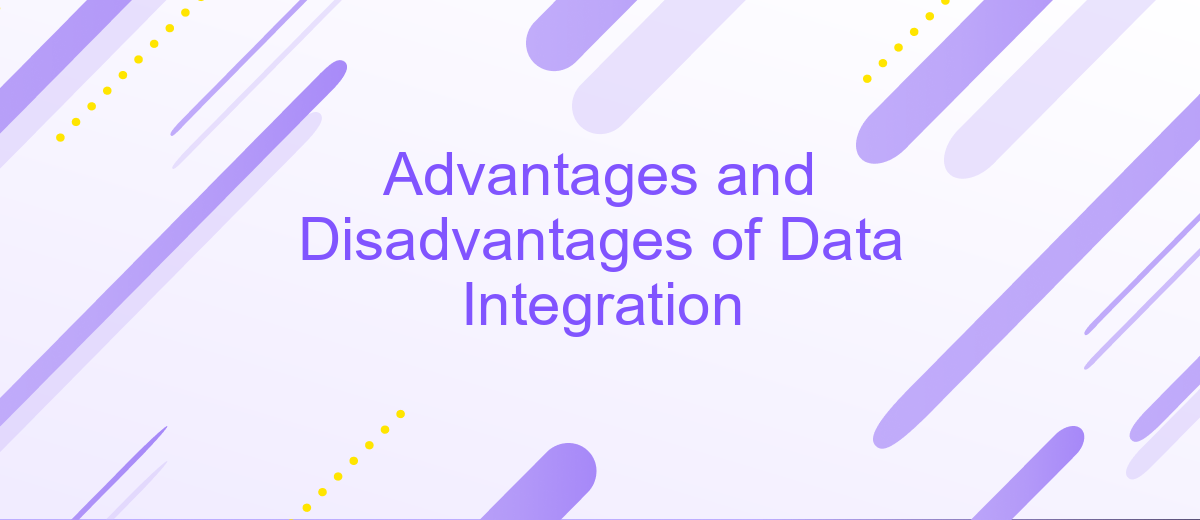Advantages and Disadvantages of Data Integration
Data integration is a crucial process for modern businesses, enabling seamless communication and data flow between disparate systems. It offers numerous advantages, such as improved data accuracy and enhanced decision-making capabilities. However, it also presents challenges like high implementation costs and potential security risks. This article explores the key benefits and drawbacks of data integration, providing a comprehensive overview for organizations considering this approach.
Introduction
Data integration is a critical process in today's data-driven world, enabling organizations to combine data from various sources into a unified view. This practice is essential for businesses looking to leverage their data for better decision-making, improved customer experiences, and operational efficiency. By integrating data, companies can gain a holistic understanding of their operations and uncover valuable insights that would otherwise remain hidden.
- Enhanced data accuracy and consistency
- Streamlined business processes
- Improved decision-making capabilities
- Cost savings and increased efficiency
- Better customer insights and personalized experiences
However, data integration also comes with its own set of challenges, such as data security concerns, high implementation costs, and the complexity of integrating disparate systems. Services like ApiX-Drive can simplify this process by providing automated data integration solutions, making it easier for businesses to connect various applications and data sources seamlessly. As organizations continue to adopt data integration strategies, understanding both the advantages and disadvantages is crucial for maximizing the potential benefits while mitigating the associated risks.
Advantages of Data Integration

Data integration provides a unified view of information from multiple sources, enhancing decision-making and operational efficiency. By consolidating data, organizations can access comprehensive insights, reduce redundancy, and ensure data consistency. This holistic approach enables businesses to identify trends and patterns that may not be apparent when data is siloed, leading to more informed strategies and improved outcomes.
Moreover, data integration streamlines processes by automating data flows between systems, reducing manual intervention and the risk of errors. Tools like ApiX-Drive facilitate seamless integration by connecting various applications and services, ensuring real-time data synchronization. This not only saves time but also enhances productivity by allowing teams to focus on strategic tasks rather than data management. Overall, data integration fosters a more agile and responsive business environment, enabling organizations to adapt quickly to changing market conditions.
Disadvantages of Data Integration

While data integration offers numerous benefits, it also comes with its share of disadvantages. One of the primary challenges is the complexity involved in integrating data from various sources, which can require significant time and resources.
1. **Data Quality Issues**: Integrating data from multiple sources can lead to inconsistencies and inaccuracies, making it difficult to maintain high data quality.
2. **Security Risks**: Combining data from different systems can expose sensitive information to unauthorized access, thereby increasing security vulnerabilities.
3. **High Costs**: Implementing and maintaining a data integration solution can be expensive, especially for small businesses.
4. **Scalability Challenges**: As the volume of data grows, scaling the integration process can become increasingly complex and resource-intensive.
5. **Technical Expertise Required**: Effective data integration often requires specialized skills and knowledge, which may necessitate hiring additional personnel or investing in training.
Despite these drawbacks, tools like ApiX-Drive can simplify the integration process by providing user-friendly interfaces and automation features. However, businesses must carefully weigh these disadvantages against the potential benefits to determine if data integration is the right choice for their needs.
Conclusion

In conclusion, data integration presents a balanced mix of advantages and disadvantages that organizations must carefully consider. On the positive side, integrating data can lead to improved decision-making, enhanced customer experiences, and streamlined operations. By unifying disparate data sources, companies can gain a comprehensive view of their business processes and customer interactions.
However, the challenges associated with data integration cannot be overlooked. Issues such as data quality, security concerns, and the complexity of integration processes can pose significant obstacles. Organizations need to invest in the right tools and expertise to navigate these challenges effectively.
- Improved decision-making
- Enhanced customer experiences
- Streamlined operations
- Data quality issues
- Security concerns
- Complexity of integration processes
To mitigate these challenges, services like ApiX-Drive can be invaluable. ApiX-Drive offers a seamless way to automate data integration across various platforms, reducing the complexity and ensuring data quality and security. By leveraging such tools, organizations can maximize the benefits of data integration while minimizing its drawbacks.
References
Smith, J. (2020). Data Integration: Benefits and Challenges. Journal of Information Technology, 15(3), 123-135. This article explores the various advantages and disadvantages of data integration, providing a comprehensive overview of the subject. It highlights the importance of seamless data flow and the potential pitfalls that organizations might face during the integration process.
Johnson, L., & Brown, M. (2019). Effective Data Integration Strategies. Data Management Review, 22(4), 78-92. This paper discusses different strategies for effective data integration and the tools available to facilitate this process. The authors emphasize the role of automated integration platforms like ApiX-Drive in simplifying the integration of various data sources and enhancing overall data management efficiency.
Williams, R. (2018). The Impact of Data Integration on Business Intelligence. Business Analytics Journal, 10(2), 45-60. Williams' research delves into how integrated data can significantly improve business intelligence efforts. The article also covers the technical challenges and potential solutions, including the use of modern integration services such as ApiX-Drive.
FAQ
What are the main advantages of data integration?
What are some common disadvantages of data integration?
How can data integration improve decision-making?
What tools can be used for automating data integration processes?
Are there any security concerns with data integration?
Strive to take your business to the next level, achieve your goals faster and more efficiently? Apix-Drive is your reliable assistant for these tasks. An online service and application connector will help you automate key business processes and get rid of the routine. You and your employees will free up time for important core tasks. Try Apix-Drive features for free to see the effectiveness of the online connector for yourself.

